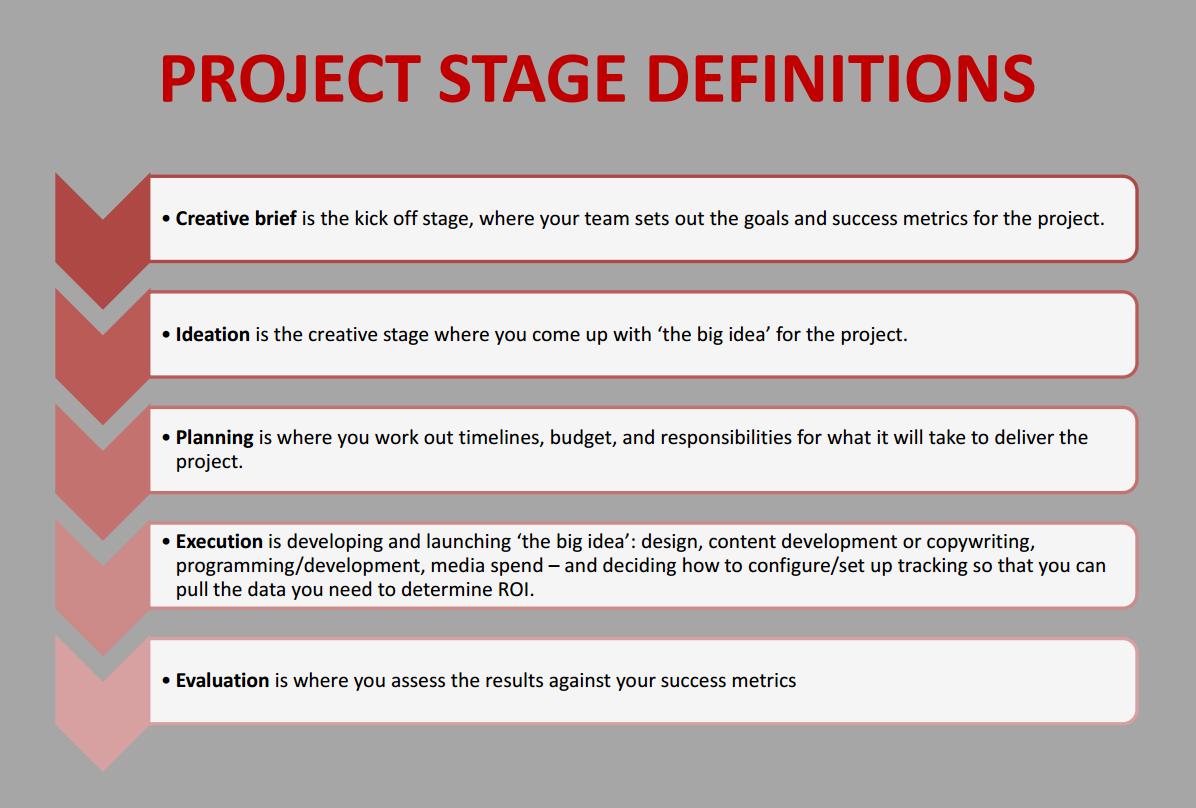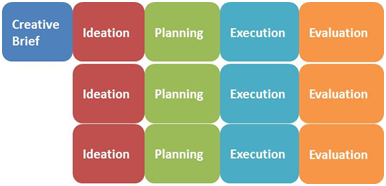How Marketing Executives are Using Data-Driven Campaigns to Reduce Risk

If your marketing team is accustomed to a project cycle that looks like this …

… it’s time to look at the benefits of changing this model.

The risk with the classic approach above is that by the time you get to ‘evaluation’, the campaign is over. The window of opportunity has passed and the budget’s been spent. You can apply your lessons learned to the next project but as we all know, every project is different.
When we talk to marketing executives, the biggest and most positive change we’ve seen is that they are re-thinking marketing best practices so that their campaigns and programs can take advantage of data and borrowing from agile processes.
Use data to make incremental enhancements
With some flexible thinking and the data that digital marketing provides, marketing teams are moving away from “all or nothing” big projects to projects that are designed with incremental enhancements in mind. Digital marketing gives teams real-time feedback that allows them to optimize while the campaign is running so that the project cycle looks like this:

This doesn’t mean that Marketing is doing a new round of ideation, planning, and execution every single time. It just means they’re leaving room for the possibility that if they identify issues during the evaluation stage, they may need to go as far back as ideation to fix it – and that includes pulling the plug on a campaign that’s not working.
On the other hand, it also means that if they’re running multiple projects and one is performing far better than the other, marketing managers can make the business decision to divert more budget to the one that’s delivering results. By evaluating at short intervals, managers can see what’s working and what isn’t and still have time and budget in the bank to make adjustments.
What this means for you in real-world marketing practice
Shorter planning cycles: One of the reasons a traditional campaign can require long lead times before execution is that since marketing teams have one chance to get it right, they’ll often conduct a lot of research for persona, messaging, or benefits. However, by building in opportunities to measure, test, and adjust as part of the campaign, you can shorten (not eliminate) the front-end research and move ahead with a reasonable hypothesis based on what you know today.
Smaller rollouts: Test new ideas by using smaller campaigns to avoid big failures. When the feedback tells you that you have a solid concept, you can scale up with confidence. Some typical scenarios include:
- Roll out to one geographical area before going national
- Roll out the campaign via a small number of channels (group within social media, a limited mailing list)
- Lead with a small content piece, such as a blog or infographic, and expand to a more expensive effort, such as a webinar or video series, if the subject matter proves popular
Data driven: The creative brief includes metrics and desired outcomes. This ensures that teams have clear direction on the objectives and KPIs that define success. When you have supporting data, you have the confidence to continue with a project, to continue with modifications, or to terminate a non-productive effort. The idea is to succeed incrementally but fail fast. One type of campaign where data analysis pays off immediately is pay-per-click:
- To achieve ROI on campaigns, you need to optimize your keyword list and this means monitoring to trim down the keyword list. Begin with a broad match to capture relevant keywords and analyze the data to get to exact matches. Continual review and assessment will get you down to the most productive keywords for your campaign.
Constant prioritization: An agile mindset applies beyond a single project. Marketing teams need to stay focused on metrics when looking at all the projects on the board. Continual evaluation prevents fire drills. If you can offer objective data to prove the value of current projects, it helps set priorities when ideas for new projects pop up.
Why agility and data-driven matter
Marketing teams today must be able to move quickly and adapt to changing landscapes. Markets, trends, and customer needs can change without warning. Flexible, data-driven iteration is the best way for marketing managers to achieve faster time-to-launch for marketing projects, respond to changing requirements, and take advantage of new opportunities.
At Smartt, we build metrics into every digital marketing campaign. We review results with clients and discuss how to improve campaign performance at regular intervals. If you’d like to know more about the methodology we use to achieve measurable results, attend one of our Digital Marketing Training Workshops and learn about the P.A.C.E. framework Or, contact us to learn what we can do to make your next campaign agile and data-driven.


